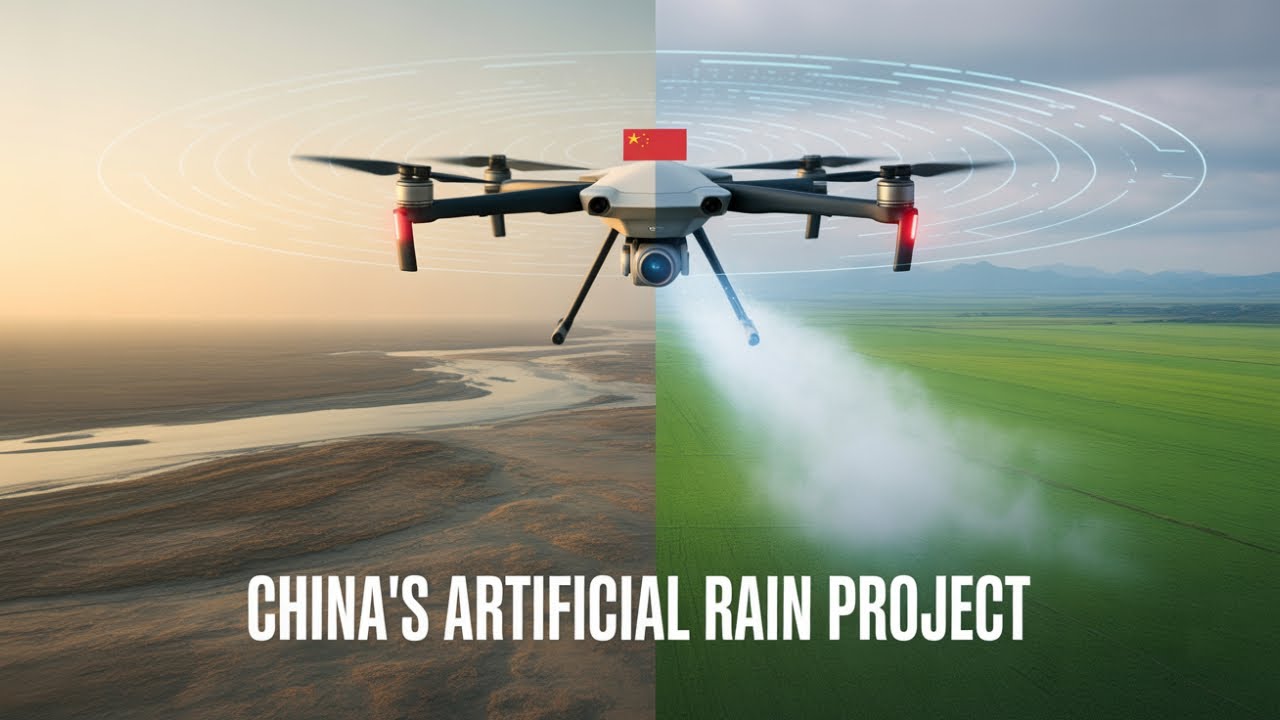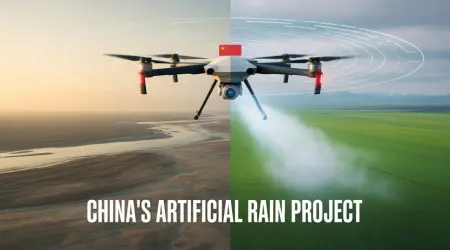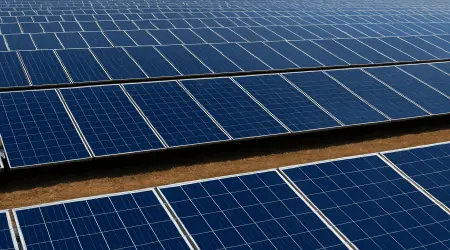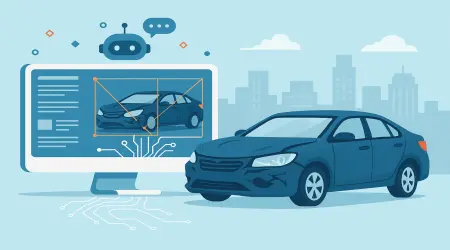

Can China Really Create Rain on Demand? The Truth Behind AI‑Powered Drones in Inner Mongolia ☁️🤖
Introduction
“It’s hard to believe, but it’s true!”
This was once a hashtag-worthy statement—until China made it a reality. Over the past few years, China has begun using AI-powered drones and microwave technology to make it rain in drought-stricken regions. No rain dances, no chemicals, no aircraft. Only high-tech cloud control. Today, let’s explore this fascinating project and what it reveals about the future of climate engineering.
🚁 How It Works: Drones, Microwaves, and AI
In the dry farmlands of Inner Mongolia, where rainfall had been absent for four seasons, Chinese scientists tested an advanced weather-control system. Within 22 minutes, rain began falling over targeted farmland. How?
- AI-guided drones: These aerial vehicles collected real-time data on humidity, wind, and cloud layers from satellites and ground sensors. They then flew into cloud formations and emitted microwave pulses—not chemicals—to encourage water vapor particles to condense into raindrops.(LinkedIn)
- No silver iodide, no cloud-seeding materials—just precise electromagnetic pulses. This is dramatically different from traditional practices.(Vanity Fair)
⚙️ Cloud Seeding vs. Energy Nudging
Cloud seeding—using silver iodide or dry ice to trigger rain—is an established method. Sources say just 2.2 lbs (about 1 kg) of silver iodide dispersed via drones produced an extra 18.5 million gallons of rain—enough to fill thirty Olympic pools. This represented a roughly 4% increase in precipitation over a large area in Xinjiang.(South China Morning Post)
In contrast, China’s new method uses energy-based nudges instead of chemicals. AI systems analyze micro‑climate data and dynamically adjust drone actions mid-flight. This allows for precise targeting and safer operation over fragile ecosystems.(LinkedIn)
🌾 The Inner Mongolia Experiment
The breakthrough occurred over a 7‑square‑kilometer area in Inner Mongolia. Once the AI-controlled drones activated, rain arrived—immediately. Local farming officials confirmed the rain without any chemical agents being used.(Instagram)
Scientists closely monitored key parameters:
- Raindrop growth from 0.46 mm to 3.22 mm
- Cloud-top cooling of up to 50°F
- Cloud vertical growth by nearly 1.8 miles
These indicators validated the method in real-time.(Interesting Engineering)
🌐 Why This Matters for Agriculture
For drought‑ridden regions, this method offers hope:
- Controlled rainfall when and where it’s needed.
- Less reliance on large-scale cloud-seeding fleets or aircraft.
- Fewer side-effects—no chemicals, no air pollution, no cross-border impacts.
China now aims to build a nationwide AI weather-routing network and increase cloud-control coverage by 2030.(Facebook, Bloomberg.com, The Guardian, LinkedIn)
❓ What About the Risks?
As with any geoengineering effort, critics raise concerns:
1. What if one area gains rainfall at the expense of another?
Since rainfall and humidity are redistributed, could areas downstream or nearby be impacted? Official responses highlight careful modeling to prevent such outcomes—but the debate continues.
2. Long-term side effects?
Though minimal for small amounts of silver iodide, the impact of electromagnetic manipulation on complex weather systems still needs study.
3. Cloud seeding’s mixed record
Even traditional methods show only modest gains: studies show around a 3–10% precipitation increase, and not always reliably.(Wikipedia)
📈 A New Era for Climate Engineering?
This new drone‑based AI-tech system shifts control from myth and ritual to algorithm and precision. As one researcher put it: “We don’t wait for clouds. We code them.”(YouTube)
For farmers in Mongolia or Xinjiang, this signals hope:
- A reliable water source for parched crops.
- Agricultural resilience without massive infrastructure.
- Potential to reverse desertification.
However, this also leads us to a bigger question:
Who gets to control the weather?
🌍 Final Thoughts
The story behind “China made it rain with AI” is no joke. This is the latest chapter in climate control—a new blend of AI intelligence, drone robotics, and microwave engineering. As cloud‑control systems become more precise, they may reshape agriculture and weather mitigation strategies across the world.
But along with the promise come consequences:
- Ethical and environmental concerns
- Regulatory questions: who owns the technology? Who’s responsible if something goes wrong?
- Global ripple effects in water cycles
This essay may be futuristic—but it’s already happening. And whether you call it #AIWeatherControl, #ClimateEngineering, or #DroneInnovation—the future of farming may well depend on it.
Read more from Science and SCMP on the development and impact of these technologies.(YouTube)
I hope this meets your requirements! Let me know if you’d like to add visuals, reference sources, or tailor it for your blog’s style.




